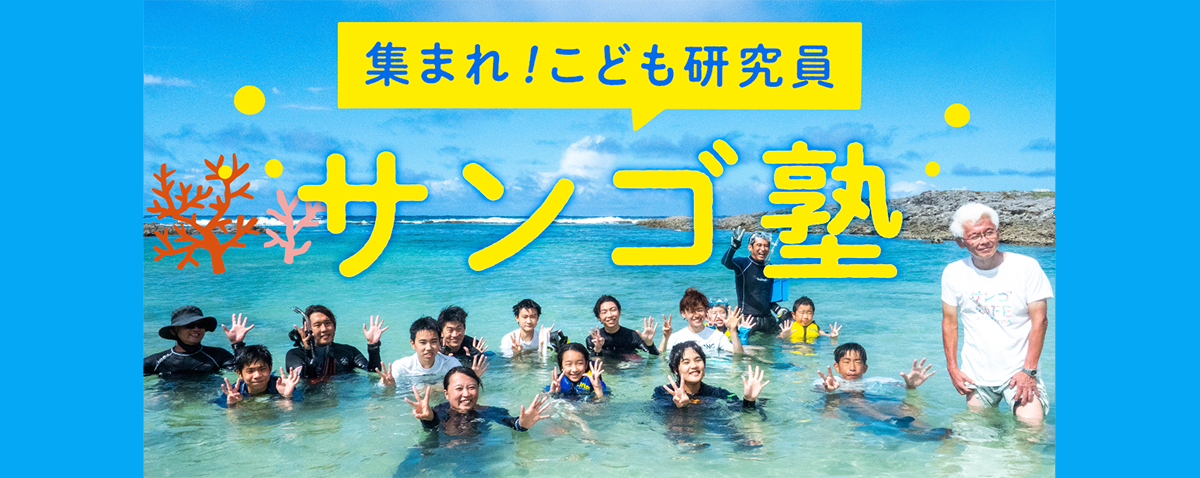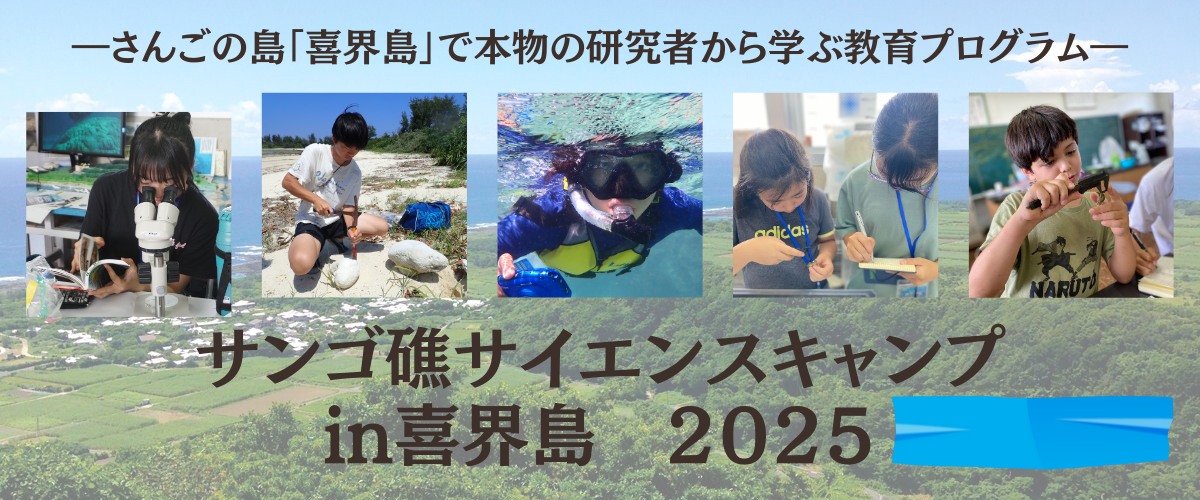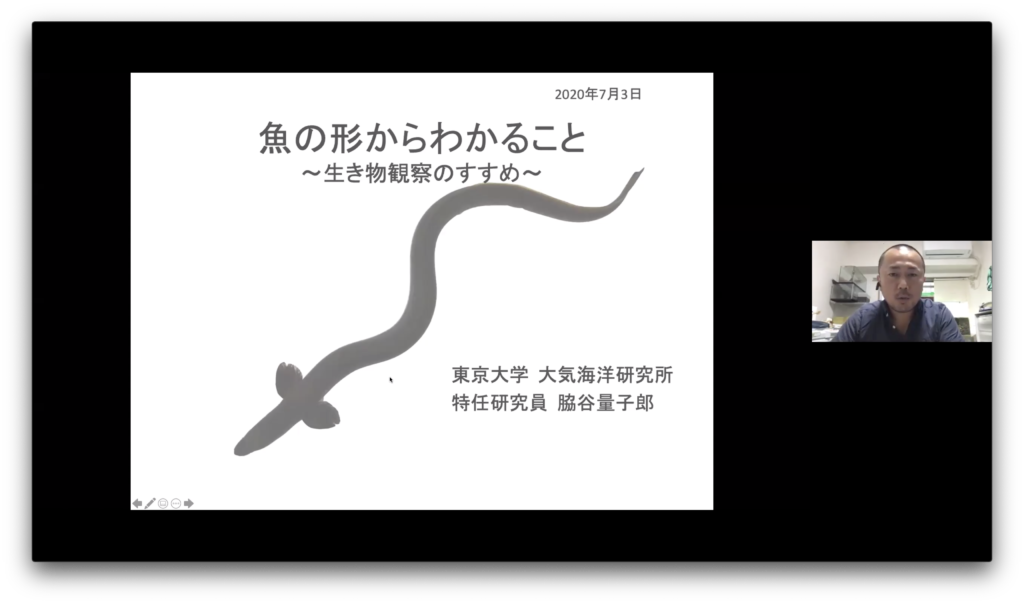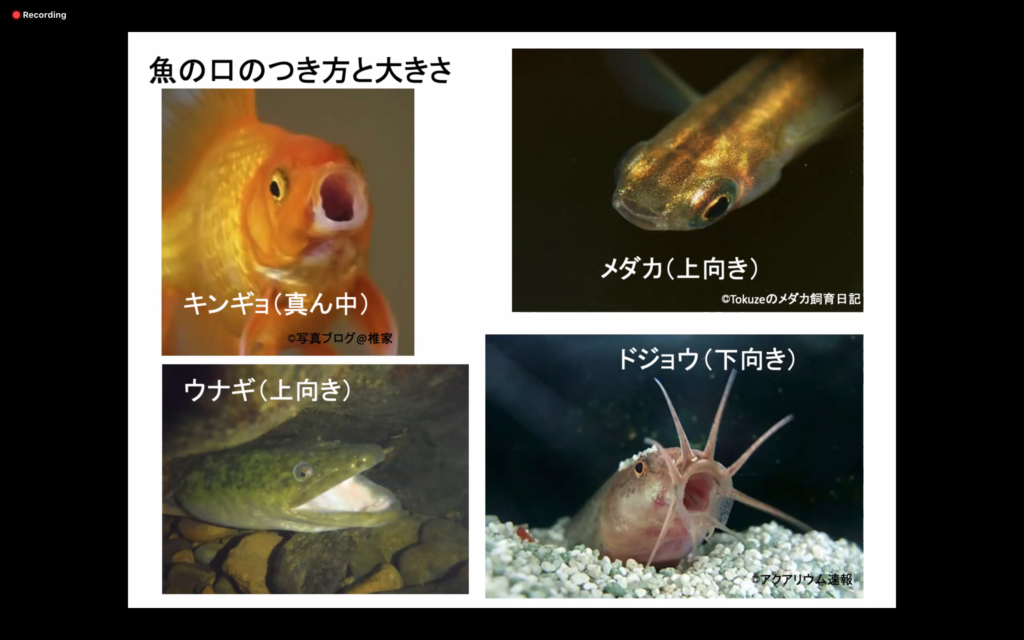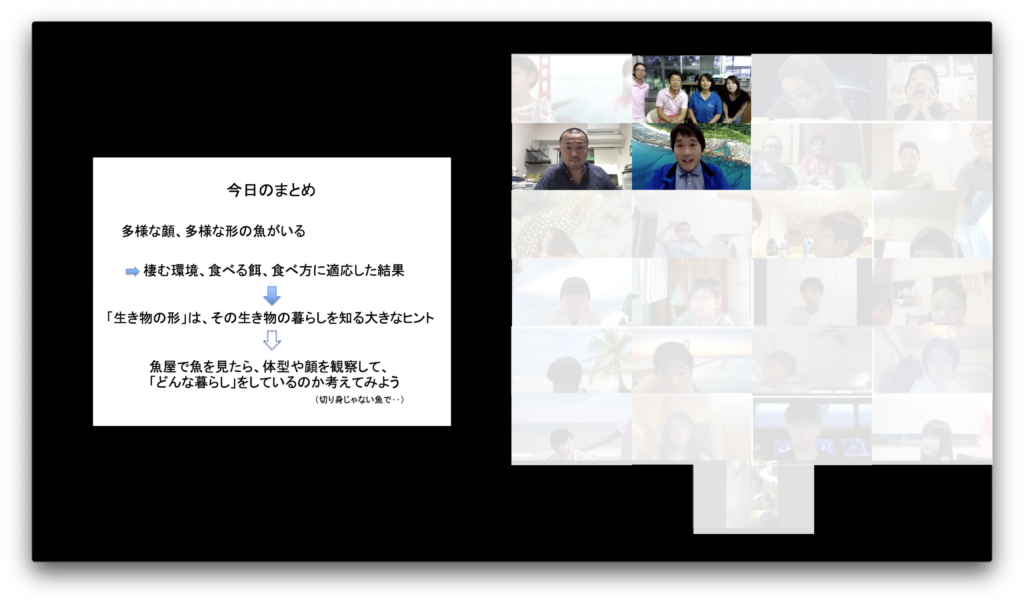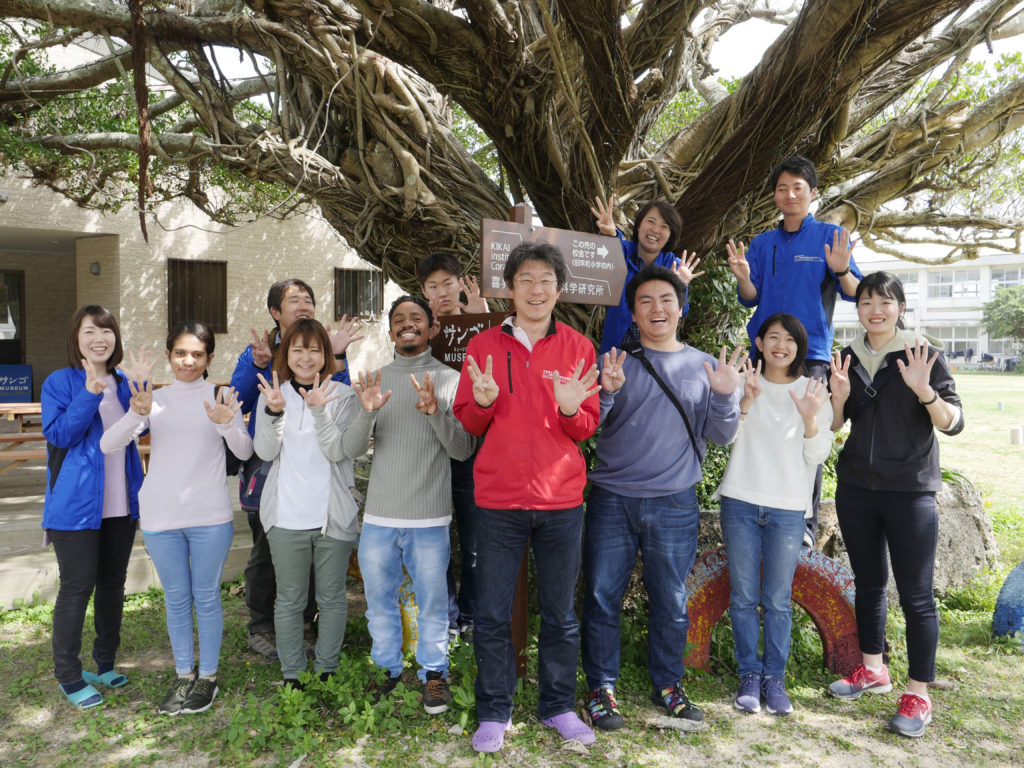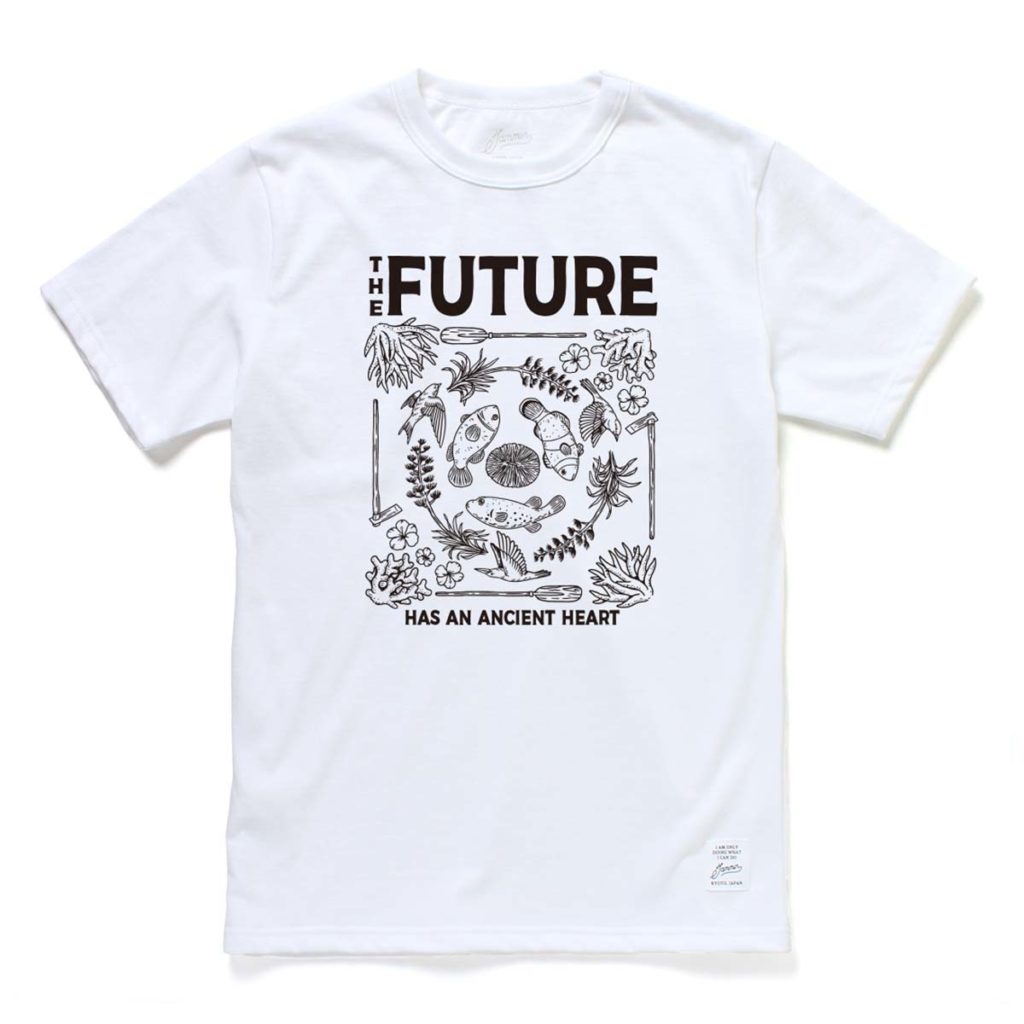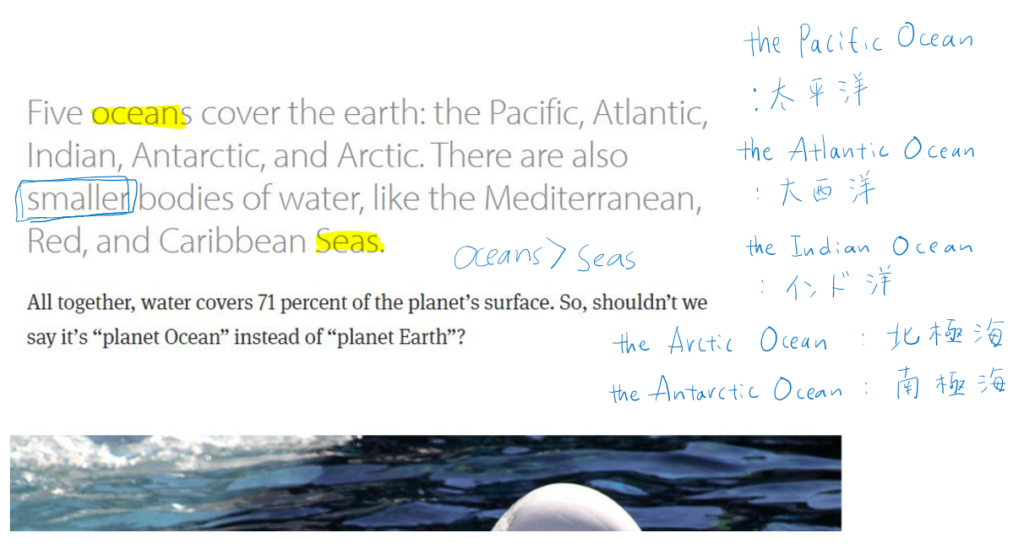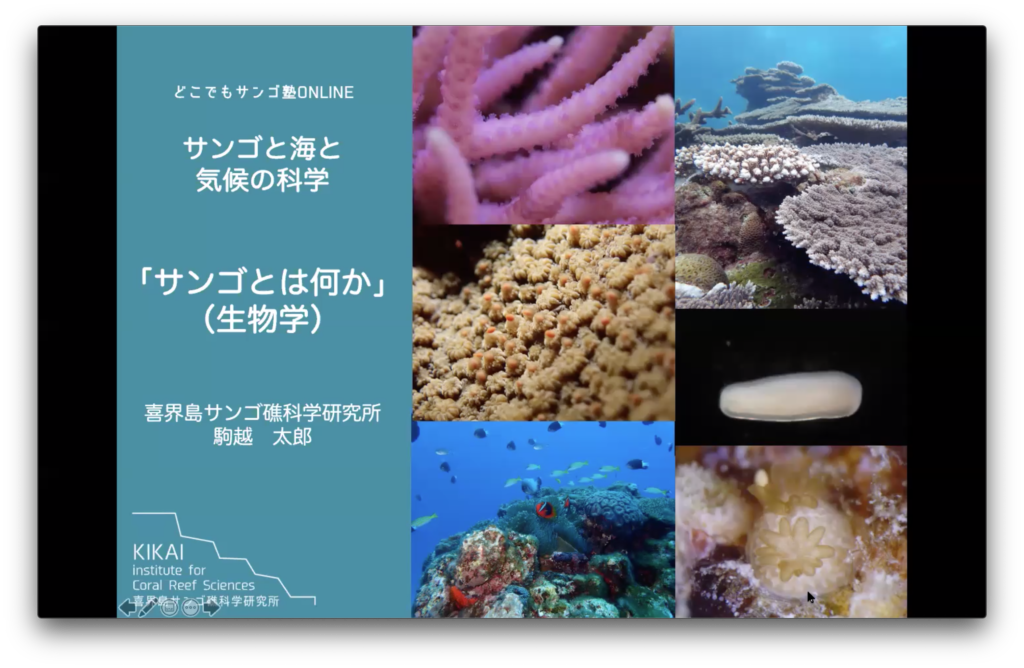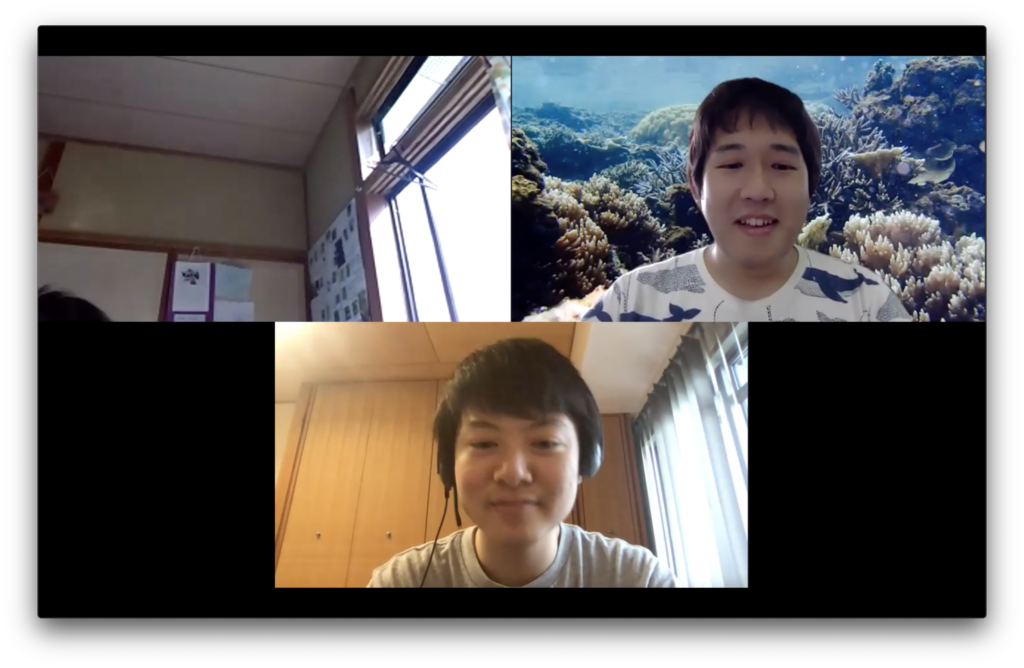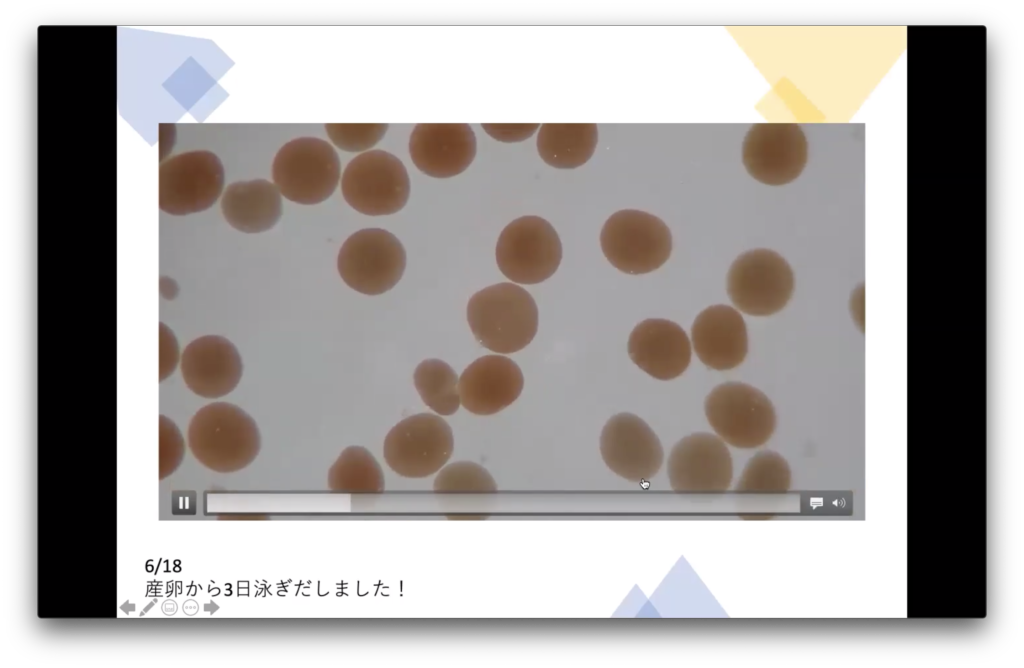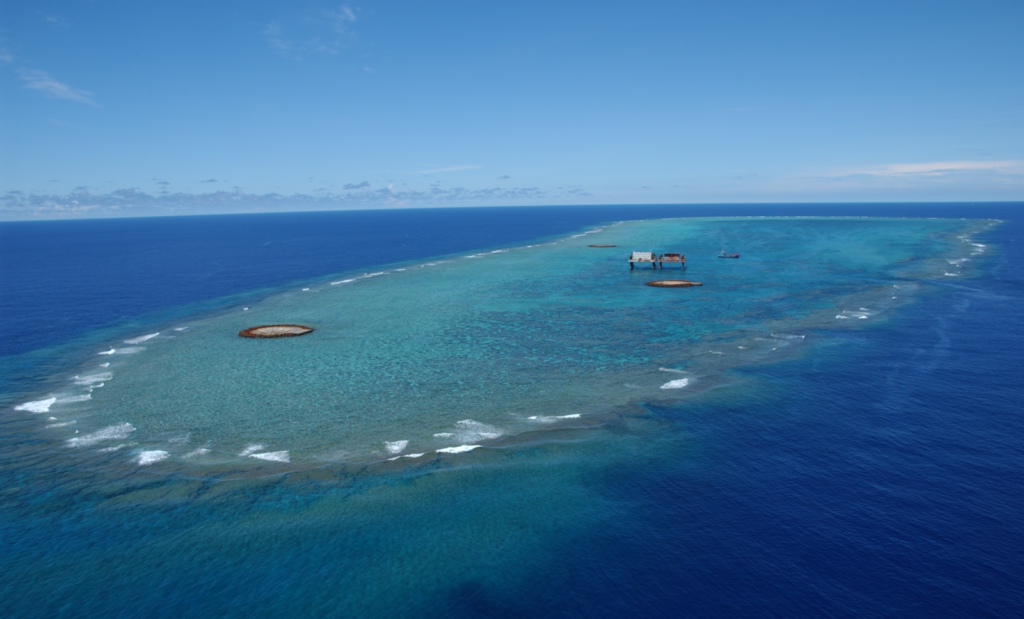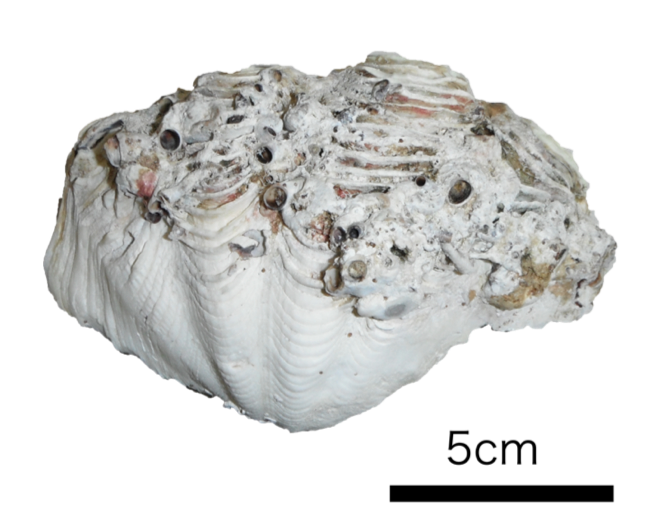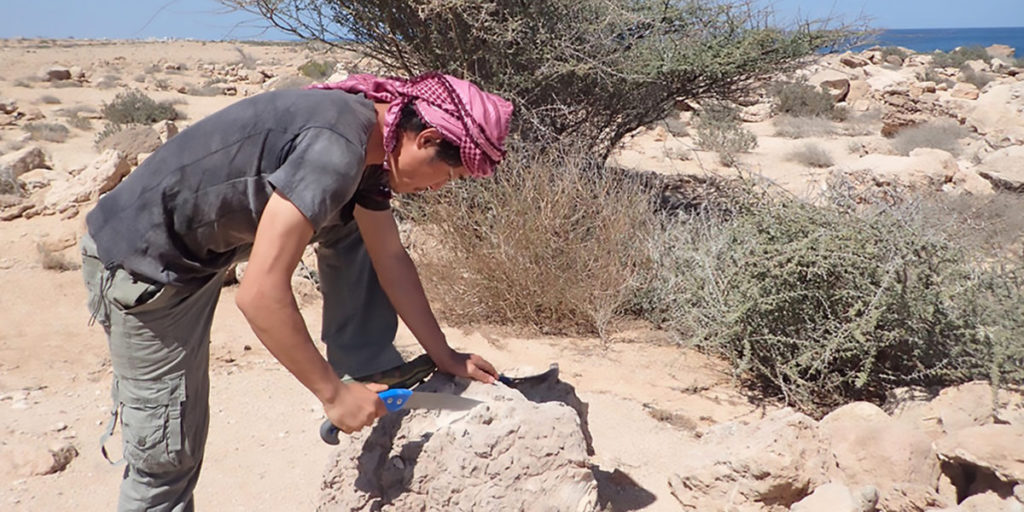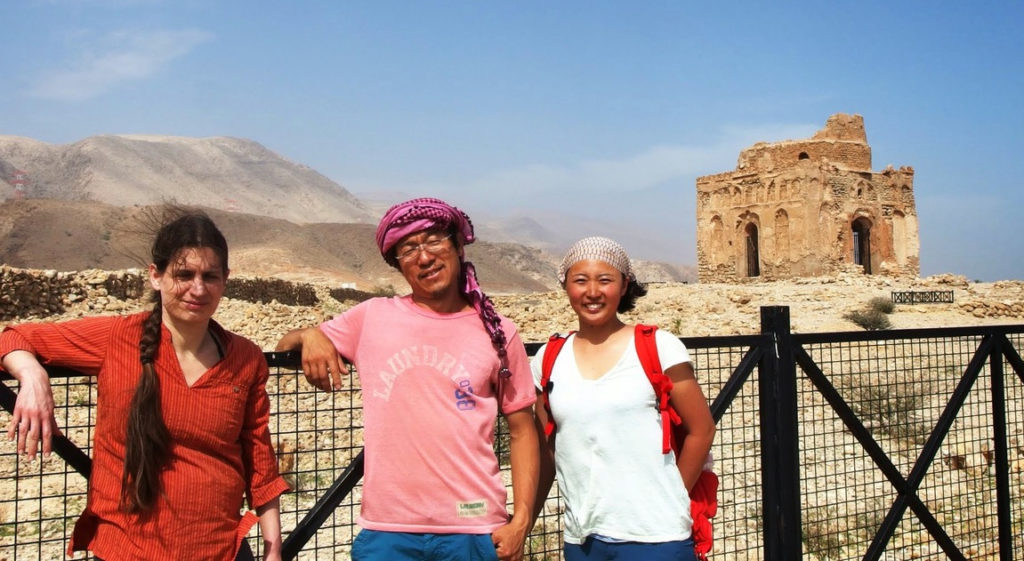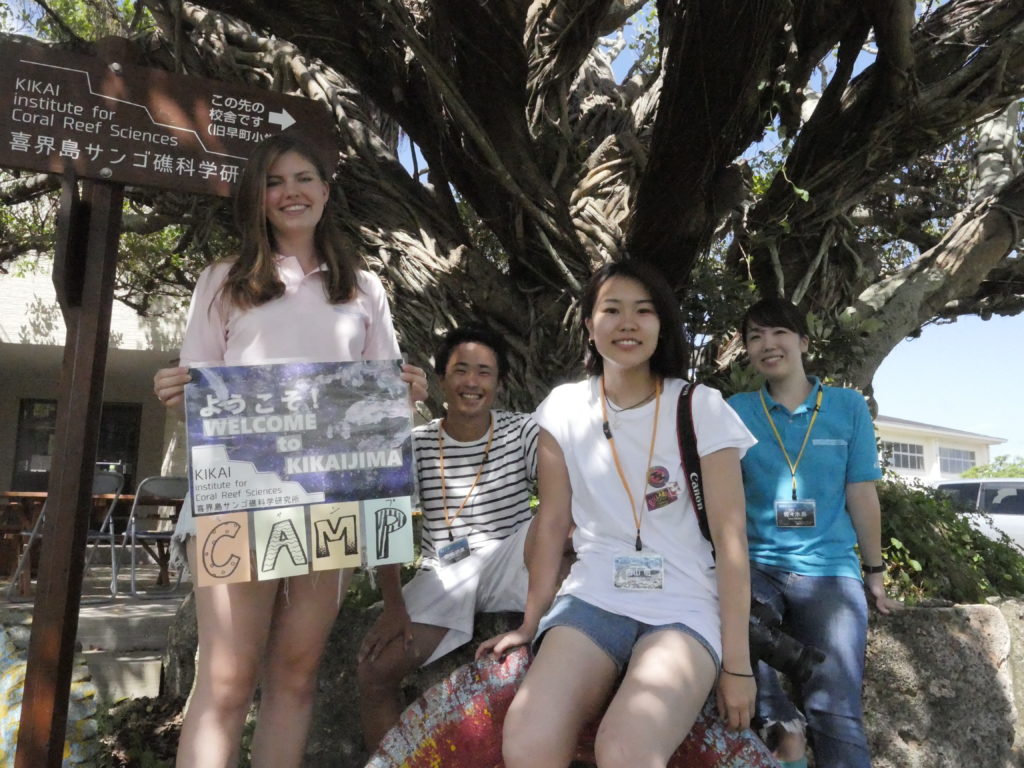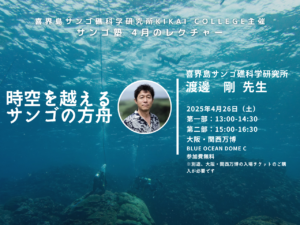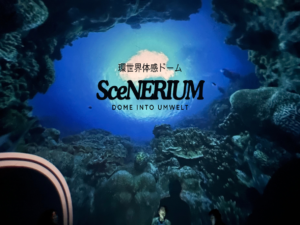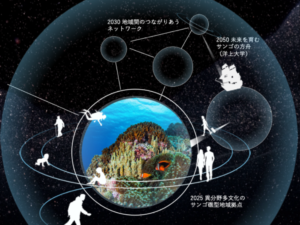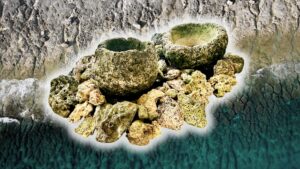お知らせ
インターンシップ体験記(ロマスジュニア貴)
インターンシップ体験記(礒川将兵)

第3回喜界島リーフチェックを実施しました!

喜界高校で講演会をおこないました!
研究所がある鹿児島県喜界島の喜界高校では、持続可能な地域・社会の発展に貢献できるグローバルな人材の育成を目指し、「総合的な探究の時間」として地域と連携した教育活動を展開しています。
その中で、地域で活動している講師による講演会を行っており、喜界島サンゴ礁科学研究所 山崎敦子 所長と、インターンシップ生ロマスジュニア貴さん(宮崎大学大学院)が喜界島高校1年生と2年生の98人に向けて講演を行いました。
テーマは「“研究者な自分“のすすめ」

山崎敦子 所長の研究者って何をする人だと思いますか?という問いに対して
「常識を覆す人」という回答がありました。

少しだけ講義の内容をご紹介します。

【研究者あるある】例えば…
最近、お腹が痛い日が多いなぁ…あなたならどうしますか?
1)寝てれば治るよ!って信頼できる人から言われたらその通りにする
2)原因を自分で確かめる
3)症状をネットで調べて、効きそうな薬を飲む
皆さんだったらどうでしょうか?

1日は24時間なんだって!と友人から尋ねられたらどう答える?
1)当たり前だよ!
2)そんなわけないよ!
3)本当に?
研究をする過程で大切なことは、全てのことが本当のことかどうか疑うところから始めます。

研究を始めるときに、全てのことを疑ってみることが大事です。
全てのことを疑うと、疑問がどんどん出てきます。自然のこと、身の回りのことを全て一度疑ってみる。そして、自分で調べることそれができれば研究は成り立ちます。
そのなかでもっともらしい答えを探す、それが研究のコツなんですよ。と山崎敦子 所長。
あっという間に時が過ぎ、終了のチャイムが鳴りました。

【喜界島サンゴ礁科学研究所 山崎敦子 所長より】
高校生のみなさんに研究とは何か?を伝えようと振り返るうちに、私も一番大切なことを再確認できました。
この自然や社会で起きていることを頭をまっさらにして、不思議に思う気持ちを持ち続けること。自分で確認したことしか自分の口からは伝えられないこと。どんなにもっともらしい結論が出たとしても、それが100%正しいとは限らないこと。それを真摯に伝えることのできる研究者でありたいなと、高校生の真っ直ぐな眼をみて思いました。
喜界高校との連携はこれからも続けていきます。ここから未来の研究者や、目の前で起こっている環境変動に対して科学的な根拠や思考に基づいて自分の意見を伝えられる人を喜界島から生み出せれば嬉しいです。

【インターンシップ生ロマスジュニア貴さん(宮崎大学大学院)より】
今回の公演は喜界島高校の皆さんに向けて研究リテラシーについてお話しするというものでした。
公演前は山崎先生から「所々話振るから、アドリブで頑張って(笑)」と言われどう切り抜けようか心配でしたが、いざ喋り始めるとなかなか楽しかったですし、喜界島高校の生徒さん達も真剣な姿勢で話を聞いてくれたり、リアクションを取ってくれたりして、とても嬉しかったです。
高校での公演なんて僕個人では中々できない経験をさせて頂いて有難い限りです。
インターン終了後も、今回得た経験を生かし、研究や今後の活動にさらに力を入れて行こうと思いました。
喜界島サンゴ礁科学研究所は、これからも地域の皆さんへ私たちが行っている活動を共有して、還元していきます。
MBC南日本放送【かごしま4】に出演しました!

気候変動の将来予測へ!CoralCO2プロジェクトのご報告

みんなで知って守る!喜界島のアオサンゴ

ビーチクリーン&生き物観察会を開催しました♫

国⽴公園の動植物を知るイベントを開催!親⼦連れ43名が参加

オンラインセミナー 7/3(金)魚の形からわかること
KIKAI college 開設!

KIKAIカレッジ〜オープンラボウィーク〜が奄美新聞に掲載されました
夏休みオンライン科学セミナーの様子が奄美新聞に掲載されました
喜界島サンゴ図鑑100年プロジェクトがNHK「情報WAVEかごしま」の中のニュースとして放送されました
フィールド図鑑(WEB版)喜界島の有藻性サンゴ類〜生きているサンゴを見分けよう〜が奄美新聞・南海日日新聞に掲載されました
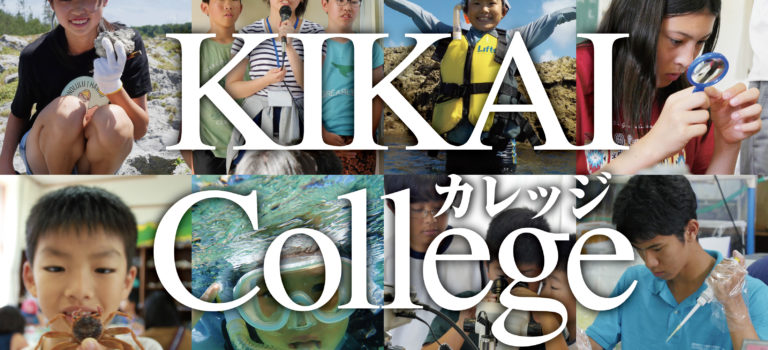
KIKAIカレッジ〜オープンラボウィーク〜開催報告

喜界島のサンゴ図鑑(ウェブ版)完成

大人から子供までサンゴに親しみながら学ぶことができる図鑑をオンライン科学イベントで一般公開!

発行:喜界島サンゴ礁科学研究所
■編著者
・藤井琢磨/鹿児島大学国際島嶼教育研究センター[奄美分室]特任助教
・北野裕子/国立環境研究所生物・生態系環境研究センター 特別研究員
・磯村尚子/沖縄工業高等専門学校生物資源工学科 准教授
・深見裕伸/宮崎大学農学部海洋生物環境学科 教授
■ポイント
・喜界島のサンゴの図鑑(ウェブ版)を作成しました。
・大人から子供まで幅広い年代が簡単に利用でき、サンゴに 親しみが持てるように工夫を凝らして作成しました。
喜界島サンゴ礁研究所に保管されている証拠標本が示されており、学術的記録としての有用性も高めてあります。
喜界島のサンゴ図鑑はウェブ版なので、誰でも無料で簡単に見ることができます。
■ 概要
鹿児島大学国際島嶼教育研究センター(奄美分室)の藤井琢磨特任助教、国立環境研究所生物・生態系環境研究センターの北野裕子特別研究員、沖縄工業高等専門学校物資源工学科の磯村尚子准教授、宮崎大学農学部海洋生物環境学科の深見裕伸教授らの研究グループは、喜界島サンゴ礁科学研究所(渡邊剛理事長、山崎敦子所長)と共同で、喜界島のサンゴに親しみを持ってもらい、喜界島のサンゴの保全につなげていくことを目的として、喜界島のサンゴ図鑑(ウェブ版)を作成しました。2020年の2月の約1週間、喜界島の様々な場所を潜水調査し、そこで見つけたサンゴについてまとめたものです。掲載した全種に喜界島サンゴ礁科学研究所保管の証拠標本番号も付記されているので、将来的に分類学的研究が進み種名が変わったとしても(例えば、1種と思われていたものが2種に分かれたり、あるいは名前が変わっても)、その標本を再確認することによって、遡って、実際にどのような特徴の、どの種のことを指しているのか誰でも調べることができます。


図鑑には今回の調査で発見されたものの内、種名が判明したサンゴ14科48属130種を掲載しています。将来的には喜界島の全てのサンゴの種類を網羅していきたいと考えています。
本図鑑は8月8日に喜界島サンゴ礁科学研究所のホームページで公開される予定です。
■ 発表
喜界島サンゴ礁科学研究所のホームページにて8月8日以降に公開
https://kikaireefs.org/kikaireefs-project/
■ 公開予定
喜界島のサンゴの図鑑(ウェブ版)は喜界島サンゴ礁科学研究所が行うオンライン科学イベント【KIKAIカレッジ】~オープンラボ ウィーク~でお披露目いたします。
同イベントは全国の小学生・中学生・高校生からサンゴ礁科学に関心がある大人を対象にしており、喜界島のサンゴの図鑑(ウェブ版)を教材に授業が行われます。本イベントの取材は喜界島サンゴ礁科学研究所(TEL:0997-66-0200)までお問い合わせください。
また、「喜界島サンゴ図鑑100年プロジェクト」とし喜界島のサンゴ図鑑を更新していくための調査費、編集費用等をクラウドファンディングで募集します。
【本研究への支援】
本研究は、喜界島漁業協同組合、鹿児島県大島支庁林務水産部林務水産課水産係、ヨネモリダイビングサービスの方々の協力により実施されました。また、JSPS 科研費、令和1 年度文部科学省特別経費、2019 年度独立行政法人環境再生保全機構地球環境基金、国立環境研究所の支援を受けて実施されました。
本件の問い合わせ先
【研究に関する問い合わせ先】
■鹿児島大学国際島嶼教育研究センター/特任助教 藤井琢磨(ふじいたくま)
TEL:0997-69-4852 /FAX: 0997-69-4853 /個人携帯:090-9389-4672
メール:tfujii@cpi.kagoshima-u.ac.jp
■宮崎大学農学部 海洋生物環境学科/教授 深見裕伸(ふかみ ひろのぶ)
TEL:0985-58-7221 /メール:hirofukami@cc.miyazaki-u.ac.jp
【報道に関する問い合わせ先】
■NPO法人喜界島サンゴ礁科学研究所/担当者名:安田暢子
TEL:0997-66-0200 / FAX:0997-58-9335 /メール:pr@kikaireefs.org
■鹿児島大学広報センター(企画評価課広報係)
TEL:099-285-7035 / FAX:099-285-3854 /メール:sbunsho@kuas.kagoshima-u.ac.jp
■宮崎大学 企画総務部総務広報課 TEL:0985-58-7114 / FAX:0985-58-2886
■沖縄工業高等専門学校 総務課総務係 TEL:0980-55-4003 /メール:ssoumu@okinawa-ct.ac.jp
琉球列島「最北端」のアオサンゴ群生 動画
ご来所の皆様へのお願い
弊所では、新型コロナウイルス感染拡大の状況と鹿児島県、喜界町での対応をふまえ、その段階に応じたガイドラインを作成しております。
・島外から弊所に滞在される皆様には、来島の日より1週間前から検温をお願いしております。1週間以内に発熱(37.5℃以上)があった場合には日を改めてご利用いただけますようお願い申し上げます。
・長期で滞在される方には、来島後72時間は所内で過ごしていただき、可能な限り、所外の方との接触はないように対応させていただいております。また来島後1週間は検温の実施を引き続き、お願い申し上げます。
・緊急事態宣言が発令されている地域からの来所においては、72時間以内のPCR検査もしくは抗原検査による陰性結果の提示か、ワクチンの接種証明の提示をお願いしております。
・また蔓延防止等重点措置および他の感染拡大地域から来所される皆様においても、可能な限り上記の証明を持って来所するようご協力をお願いいたします。
<お知らせ 2021.08.13>
喜界町の新型コロナウイルス感染症警戒レベルが「レベル5」になったため、研究所および展示室の見学、サンゴCAFEの営業を停止いたします。お問い合わせは、喜界島サンゴ礁科学研究所(電話:0997-66-0200)までお願いいたします。
再開につきましては、鹿児島県、喜界町での対応を踏まえて判断をしてまいります。みなさまにはご不便とご迷惑をおかけいたしますが、何卒ご理解とご協力をお願いいたします。
2021年8月13日 喜界島サンゴ礁科学研究所

【各メディアに掲載】琉球列島「最北端」のアオサンゴの群生を確認

琉球列島「最北端」のアオサンゴの群生を確認
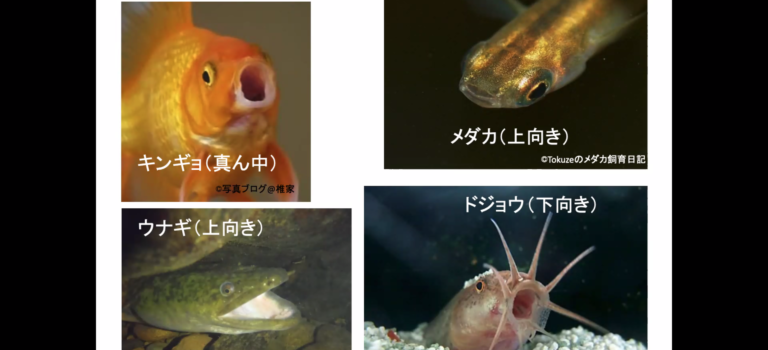
オンラインセミナー7月3日(金)「魚の形からわかること」
喜界島サンゴ礁科学研究所 6th Anniversary 【#100年後に残す】
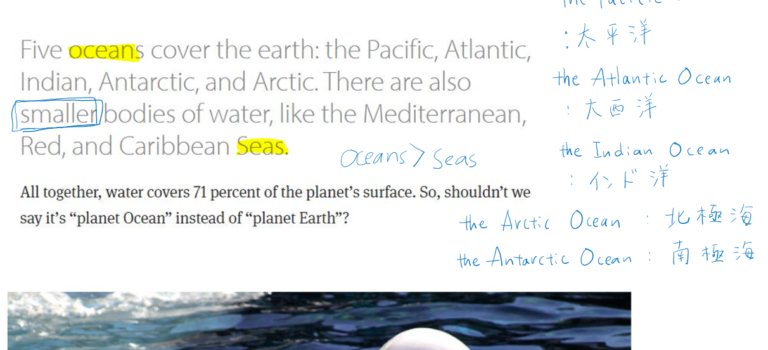
【オンライン科学英語】6/25 初級中級クラス
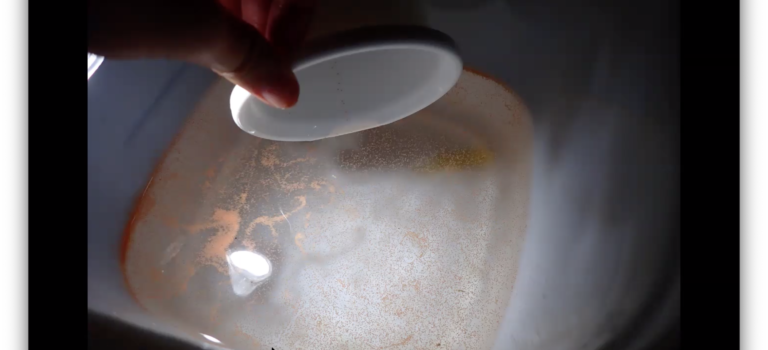
【オンラインサンゴ塾】 サンゴ礁研究コース「サンゴとはなにか(生物学)」
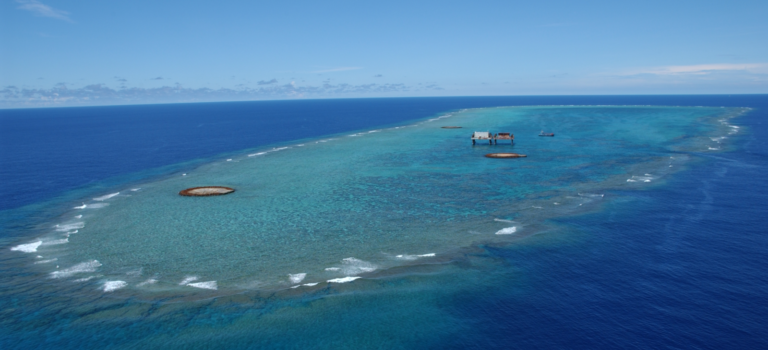
Giant clams tell the story of past typhoons
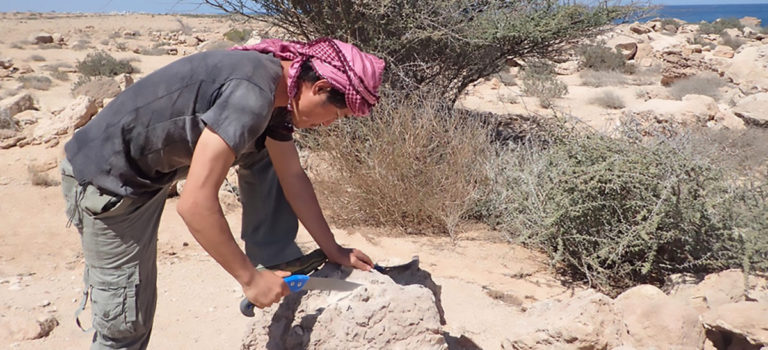
Strong winter dust storms may have caused the collapse of the Akkadian Empire
Recruiting interns!

